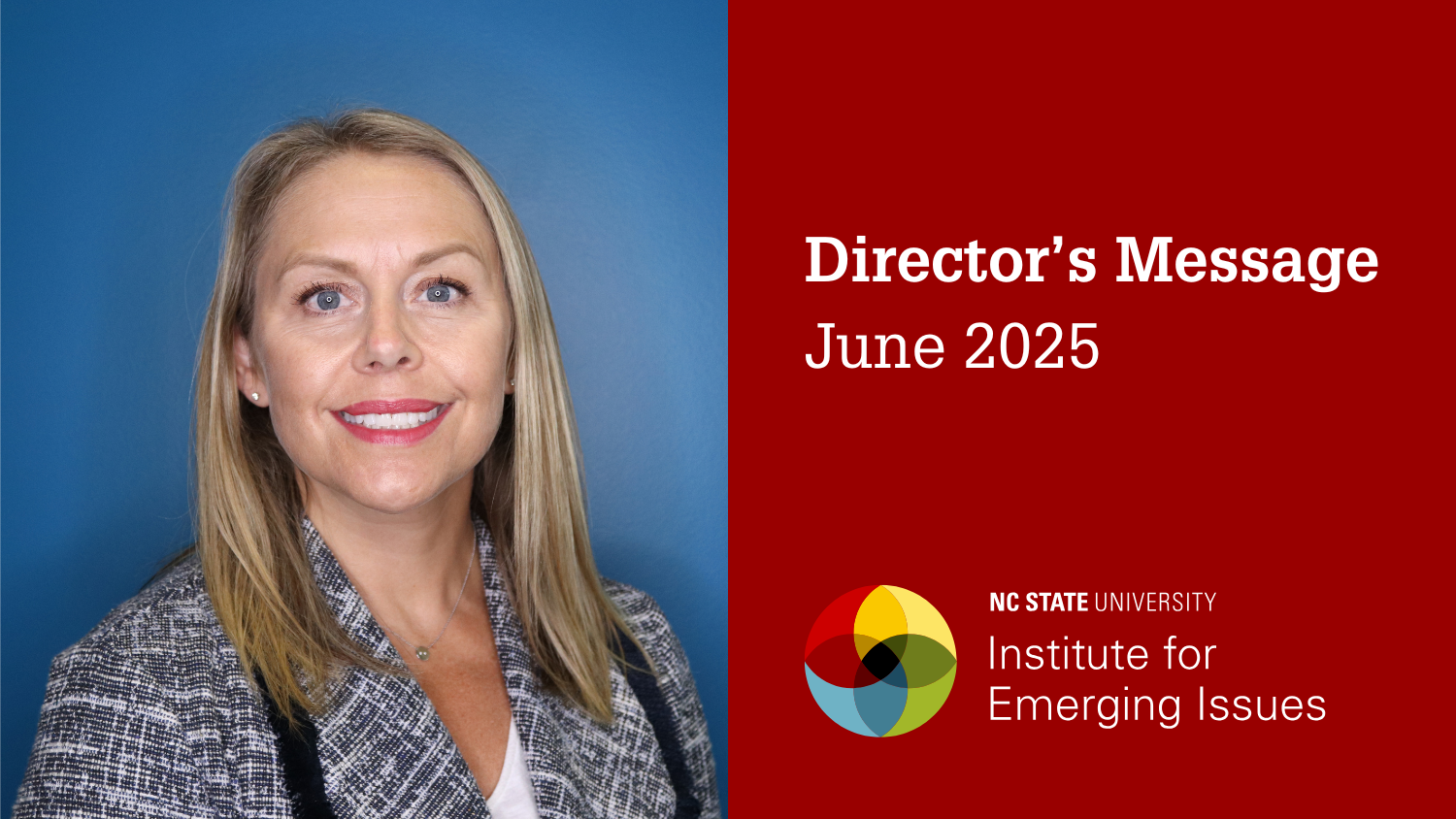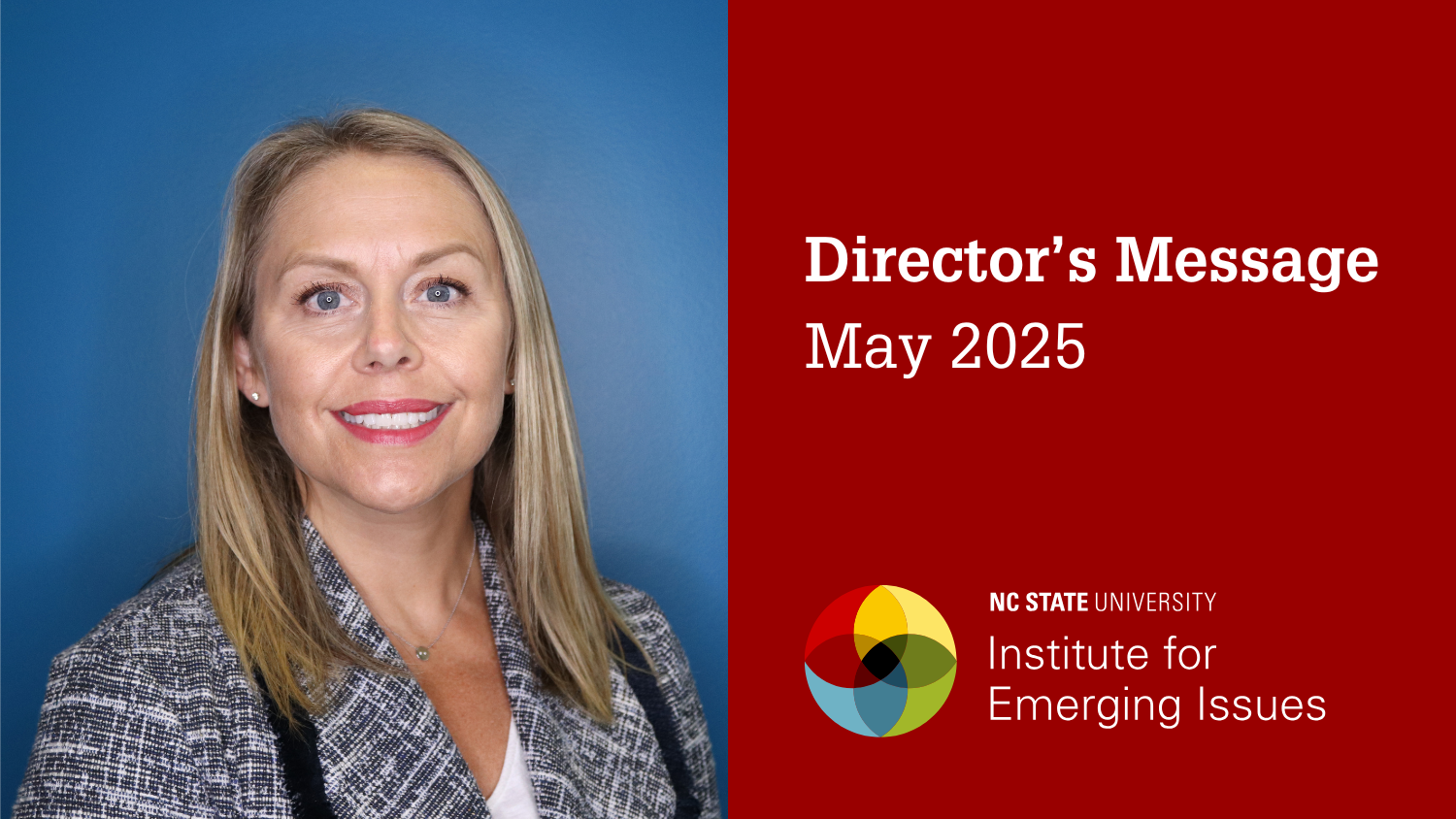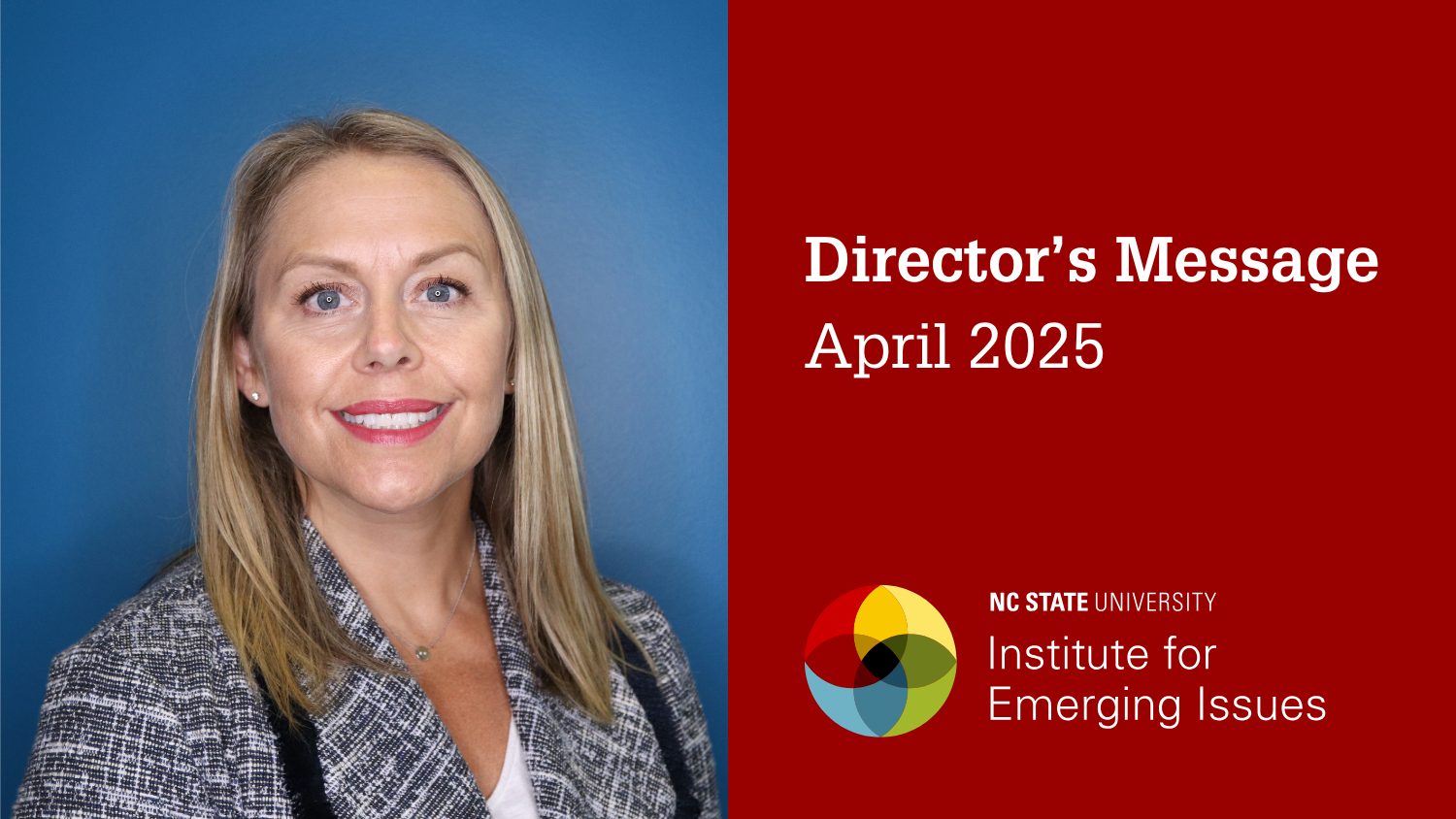Director’s Log | September 2020
 What Needs Changing When Everything’s Changing
What Needs Changing When Everything’s Changing
At the start of our September 24 webinar on “Higher Education and the Future of Work,” Hope Williams, President of North Carolina’s Independent Colleges and Universities (and IEI board member), told a story about someone who asked her about the state of higher education this fall. “What’s changed?” they asked. Her answer: “Absolutely everything.”
Amen. As I write this from my perch on the 4th floor of NC State’s Hunt Library, I’m looking down on a parking lot without cars. Across the hall is a classroom without a professor. On the other side of the quad is a dormitory without students. Down the road is a football stadium without fans. So…yeah.
This fall has been a series of wrenching decisions at every college and university. How to open. When to close. How to stay safe. How to teach and learn. How to keep staff. There’s no roadmap; no precedents to draw on. And whatever you decide today may turn out to be wrong tomorrow.
But if there is one thing we learned during the webinar, it is that the challenges higher education is facing go well beyond the pandemic. If there is another, it is that there is an appetite for significant change, one that doesn’t come along very often.
After a lot of sophisticated data crunching, and just a touch of wild guessing (as Neils Bohr once wrote: “Prediction is very difficult; especially when it is about the future”), North Carolina ran the numbers and concluded that, over the next decade, we are going to need 2 million people between the ages of 25-44 with some sort of meaningful credential beyond high school. Earlier this month, the myFutureNC Commission told the General Assembly that if we did nothing, we would come up about 300,000 people short (listen to myFutureNC’s Cecilia Holden and Jeni Corn talk about their work here).
Getting there won’t be easy. After years of increases, the number of high school graduates in North Carolina will decline over the next decade by 4.3%. That means we are going to need to do a better job of making sure every one of those graduates sees the value of higher education, chooses to enroll and then gets a degree or credential. And it means we are going to need to attract back adults to get more—or different—education.
Where should we pay attention? According to our panelists, to those who are currently getting degrees at lower rates: Blacks. Members of the LatinX community. Folks from rural areas. Lower income students.
What needs to change to raise up 300,000 more North Carolinians who are equipped with a meaningful educational credential—one that will enable them to get work that will help them support their families? There are a lot of answers, but here are a few lifted up during the webinar:
- Moving from an efficiency mindset to an effectiveness mindset: Kelly Young, head of Education Reimagined, noted that for too long we have made education convenient for the deliverers of education. It’s time she said, to convert to a “learner-centric” model. It’s the same idea the father of North Carolina Community Colleges, Dallas Herring, articulated long ago: “Taking people from where they are and carrying them as far as they want to go.” (Good news: the annual Dallas Herring lecture at NC State’s Belk Center is coming up on November 10. Registration information here.)
- Connecting learning to life: Leslie Garvin, the executive director of NC Campus Compact, noted that creating more opportunities for students to apply what they are learning in a community context can actually increase college graduation rates.
- Extracting lessons from COVID: AB Tech student Jason Fyle, shooting for an HVAC degree in 2021, noted that in many ways the pandemic has accelerated trends that were already beginning pre-COVID: demonstrating the potential—and limits—of online learning: new potential in the previously “hands-on” learning space; improved digital competency for everyone; finding new ways to collaborate. Post-COVID we can immediately run with the best of these solutions and abandon our failures.
- Making the case to adults who dropped out: North Carolina has more than 1 million adults who started college, then dropped out. There are another 325,000 adults still unemployed as a result of COVID. But a lot of those folks are gun-shy—uncertain if going back will get them the job they need. NC Community Colleges interim President Bill Carver challenged all institutions of higher education to make it easier for those adults to come back.
- Changing campus culture: Kim Wilcox, chancellor of the University of California Riverside, and William Serrata, president of El Paso County Community College, are both among the top 5 in the nation in narrowing the achievement gap among different racial and ethnic groups. They agreed that the biggest key to their success has been changing the institutional “culture”—demonstrating to everyone on campus that graduating students, regardless of their backgrounds, come only when everyone on campus commits to that.
- Changing the incentives: NC State Chancellor Randy Woodson noted that there are some built-in challenges with the way we evaluate success: “We may need to move from judging universities based on the scores of their students when they walk in the door and move to judging them based on the results when those students walk out the doors.” What would happen if we started making economic mobility more important than selectivity?
The underlying question for all this potential change is, “Why?” And the answer, I think, is “Because that’s the right thing to do.” Or “we’re never going to make our attainment goal with one half of our brain tied behind our back.” Or “the alternative is unacceptable.” Here’s the way new UNC System President Peter Hans put it: “When those of us in the public and nonprofit sectors fail to provide simple, compelling options for working adults or students on the margins, we leave the field wide open for bad actors. When we fail to change our programs to meet the changing needs of our citizens, we contribute to widening inequality. When we make a real education hard to access while a fake education takes nothing more than a toll-free phone call, we leave behind the very people who need us the most.”
And the opposite of all those things is true too. When we offer those options, change our programs to meet changing needs, lessen inequality and make real education easier to access, we deliver on the promise of higher education. We equip our graduates with the skills they need to support their families and live lives of meaning. We come closer to being what IEI Senior Policy and Program manager (and lead planner for the webinar) Sarah Hall calls “the North State’s North Star.” And we deliver on our part of the promise of North Carolina’s toast: to make this a place “where the weak grow strong, and the strong grow great.”
- Categories:


